How to Organize a Closet in a Weekend and Maximize Every Inch of Space

Closets are the black holes of every home. Household goods love to go in, but unless you’re preparing to move or are gearing up to do a really deep clean, rarely do the full contents of a closet see the light of day. Make the effort to organize your closet even just once, however, and it will pay dividends for years to come.
This step-by-step guide walks through how to organize a bedroom closet—what many would consider the most important closet and most frequently utilized in the house.
A bonus guide focuses on organizing the small but essential and oft-overlooked linen closet. Keep an eye out for tons of tips and DIY hacks sprinkled throughout. Happy organizing!
Photo via Jenni Ingram
How to Organize a Closet
Getting everything organized, is going to get a bit messy at first. But trust us when we say that it will be worth it. Just make sure you have the time you need to tackle this project.
Depending on what your closet looks like now and how ambitious of an overhaul you’re envisioning, to properly organize your closet, designate a two-day weekend, at a minimum.
What You Need to Organize a Closet
- General cleaning supplies like rags, all-purpose cleaners, and a vacuum cleaner
- Large trash bag or bin for items to be tossed
- Oversized reusable shopping bags for donations (large IKEA bags are great for this task)
- Tape measure, pen/paper
- Mood board/style inspiration for closet organization
- Tools and materials required for any potential DIY projects
- Estimated budget for the project
1. Take Everything Out and Clean
…And we mean all of it. Bring every single pair of shoes, every stray sock, and every dusty storage bin out of the closet. Taking inventory of what you actually own is an important reality check and an essential first step to organizing a closet of any size.
Use the opportunity to deep clean the closet itself, including vacuuming every nook and cranny, dusting shelves, wiping down rods, and cleaning the baseboards.
2. Find Better Storage for Non-Wardrobe Items
If closet space is at a premium, pay special attention to what takes up real estate in your bedroom closet. Try to keep your bedroom closet limited to your garments, accessories, and shoes.
Can miscellaneous items like sports gear and equipment fit in the garage? Or how about large suitcases and travel totes—unless you’re utilizing their insides for storage, those items might be best kept in a storage room or spare bedroom, or hallway closet.
And while bedding and other linens are easily accessible in a bedroom closet, they’ll find a better home in a linen closet (which we’ll teach you how to organize below).
3. Purge
Next, it’s time for a proper “ wardrobe purge.” Do your best to power through this time-intensive, often sentimental activity in one session. Every garment, every casual t-shirt, and even every pair of underwear needs to be categorically sorted into keep, donate, sell, toss, and recycle piles.
If you’re stuck as to whether to keep or part with something, follow Marie Kondo’s now-famous mantra: “Does it have a purpose? Does it bring me joy?”
Clothes that are both purposeful (they fit properly, they’re in regular rotation in your wardrobe) and bring you joy (you feel comfortable and confident wearing them, and they are true to your personal style) are automatic “keep” items.
Gently-used garments, shoes, and accessories that either don’t really fit right, you’ve never really loved, or you just don’t need or ever wear again, should be relegated to “sell” or “donate” piles. All others should be properly tossed or recycled.
Recycling Clothes
4. Make a Plan
Now comes the fun part: Time to channel your favorite home design shows! You’ll want to make a plan for your closet in two important parts: function and flair.
Function:
Whether you’re working with a small apartment closet or a spacious walk-in closet in a master bedroom, the number one way to maximize closet space is to create a functional, organized, streamlined space for your clothes, shoes, and accessories.
Have a dedicated, accessible spot for everything, and try to keep everyday items closer to the ground for easy reach. If clothes and accessories are sitting up high on a shelf, they likely won’t get worn as much and it’s essentially money going to waste. Adjustable shelves and custom closet organizers do wonders in creating a more functional space.
You can also grow your storage capacity without having to grow your closet space: from space-saving hangers to drawers (you can fit 2-3 times the amount of stuff in drawers than you would if they were hanging), there are solutions out there for every budget—and every size closet.
Flair:
In addition to practical storage solutions for your closet, there are plenty of easy ways to give your closet a bit of flair. Does your walk-in closet have room for a full-sized mirror and a decorative pouf? What about a stylish new light fixture?
Brighten up a small closet with a fresh coat of paint (stick to soft colors and neutrals) and battery-operated motion-sensing lights or ambient string lighting ( IKEA has a great selection).
If space allows, pick a shelf or two to display a few statement accessories for an artful impact. With a small closet, a decorative, over-the-door hook facing towards the bedroom can show off a few favorite accessories in rotation—or serve as a sort of mood board for your next fun occasion.
5. Decide How to Organize
Before you start moving your pared-down wardrobe back into the closet, you’ll need to decide on a method for organizing your clothing. There are three common options to group clothes:
- Purpose or occasion. This might mean work clothes together and weekend/casual clothes together.
- Garment type. For example, all short-sleeve collared shirts grouped together, all dress slacks together, all casual t-shirts together, and so on.
- Color. This is a super-popular method of organizing right now thanks to Netflix's organization show The Home Edit. You can color coordinate your closet, grouping clothes with similar hues like reds, pinks, oranges, yellows, etc.
Shoes and accessories can also be similarly organized by purpose/occasion, type, or color.
Photo via Living Rich on Less - Susan
How to Organize a Linen Closet
One of the smallest closets in a home, the linen closet is often taken for granted. For its humble size, this catch-all closet manages to hold bulky items such as extra sheets, towels, blankets, and comforters, along with spare toiletry and cleaning supplies. Sometimes, you can even squeeze the iron and iron board in there!
Once organized, a linen closet can be quite eye-catching. Imagine, reaching for fresh sheets and, instead of feeling exasperated at how messy the closet is, you can quickly find exactly what you’re looking for and close the door with a feeling of satisfaction.
Here’s how to properly organize a linen closet. Keep in mind that unlike bedroom closets, which are more of a customizable blank slate, a linen closet is much more of a fixed space. There are likely some built-in shelves and those are going to stay just where they are. The key here isn’t to try to add more shelves but to more efficiently utilize the storage spaces already in the linen closet.
1. Empty the Closet
Like every good closet clean, the contents of the linen closet need that critical inspection, too. Are there fraying towels or sheets well past their prime? Any dusty, partially-used toiletry products you should just toss? Toss these items to save room and start fresh.
Saving Scraps
2. Measure and Shop for Storage Solutions
The point of organizing a closet is to ensure that everything has its own place and to maximize the function of the space, which means finding the right combination of bins and baskets, storage cubes, and over-the-door solutions.
All of this starts with knowing what dimensions you’re working with. Break out the tape measure and take measurements of the space before purchasing any storage materials. Is your linen closet shallow or deep? Does the closet have built-in shelves and/or cubbies?
Separate linens by type in designated zones. Keep most-used items (like towels and washcloths) at eye level, making them easy to reach for in a second. Place lesser-used items (like beach towels or spare blankets) at the top or bottom of the closet.
Avoid Spills
3. Fold Sheets and Towels Like a Pro
A quick YouTube search reveals plenty of visual tutorials covering some of the most basic folding methods for sheets and towels. With a little practice, these techniques will become second nature in no time.
And the payoff is worth the effort: Once sloppy, jumbled piles of towels are replaced with towels so perfectly stacked and folded, you’ll never be searching for a missing sheet or pillowcase again. Find our full guide on how to fold a fitted sheet here.
4. Save Room with Vacuum Storage Bags
Jumbo Spacesaver storage bags are just the right size for bulky linen closet items; once compressed, pillows, extra comforters, and the like take up a fraction of the space. Store either very low or very high in the closet.
Photo via Pinspired to DIY
More Tips and Hacks for Organizing a Closet
We’re not done yet: Keep reading for even more storage-saving hacks to get the most space out of your closet.
Maximize Vertical Space
Go up! Here are just a few of the ways to make the most of underutilized vertical space (especially blank walls) in closets.
- Stacking bins
- Floor-to-ceiling corner shelf
- Vertical fabric cubbies that can hang from the closet rod
- Over-the-door storage
- Wall-mounted storage bins
- Hat/garment hooks
Try New Folding Techniques
Whether it’s socks and underwear or t-shirts and activewear, drawers have the tendency to get messy quickly. Try rolling your tees and workout clothes, Marie Kondo’s “KonMari” folding technique, or any one of these clothes folding hacks on YouTube? A little practice makes perfect, but the functionality is oh-so worth it.
Relocate Seasonal Wear
There’s no reason why your ski pants, your festive holiday sweaters, or your collection of Halloween costumes should be taking up such valuable space in your bedroom closet when they’re only used seasonally. Store out-of-season apparel elsewhere, like vacuum-sealed and stacked in a storage room or another empty closet.
In the same vein, only keep clothing, accessories, and shoes that are appropriate to the current season stored in your bedroom closet. So as fall sets in, pack summer pieces up; once spring has properly arrived, it’s time to pack up your winter wardrobe.
As a bonus, these seasonal transitions naturally lend themselves to evaluating if any pieces should actually be purged.
Think About a Garment Rack
A rolling or stationary garment rack is a quick and simple solution for many closet conundrums and it’s understated enough to be out in the open in a bedroom or against an unused wall in a walk-in closet.
Just be sure to dress up the garment rack: Style by hanging some of your own clothes and accessories that are inspiring your vibe right now with coordinating hangers. Leave a little breathing room between the hangers for that "boutique-chic” appeal.
Keep a Donation Bin Nearby
Styles change, tastes change, and the clothing we need for various times of our lives changes. So when you come across a garment that no longer has a purpose or brings you joy, it’s time to let it go. Keep a bag or a bin in your closet for when you find yourself spotting pieces that no longer serve a purpose in your wardrobe.
Track Clothes Wear
Photo via Darla DeMorrow
How to Maintain an Organized Closet
With a freshly organized closet and a wardrobe that feels lighter, more purposeful, and is filled with your favorite garments, it’s safe to say that the hard work is done—but it’s not. There are a few important steps to take to keep your closet (almost) as organized as the day you overhauled it.
- The next time you pull out a garment that you realize you’re not really into anymore, toss it into the “donate” bin right away.
- Sock lose its mate? Give it a few more laundry cycles to see if the lost sock comes back, but it might be worth it to just let it go and throw the lonely one away.
- When buying new “basics,” take a quick inventory of what else you have in that style. Is there an older garment (or undergarment) your new purchase could be replacing? If so, donate or toss the older version.
Think of your newly-organized closet as a garden—there’s always going to be a little maintenance, but it’s better to stay on top of it than to let it get wild beyond control.
Do you have any closet organization tips? Comment below—we’d love to hear them!



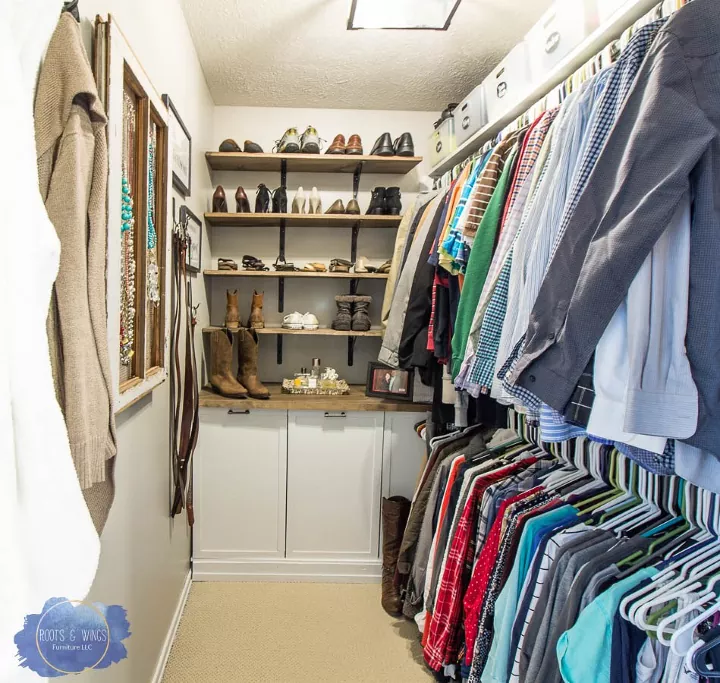




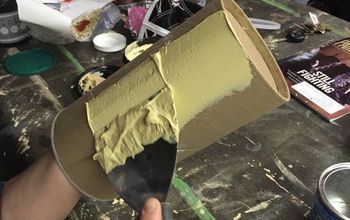



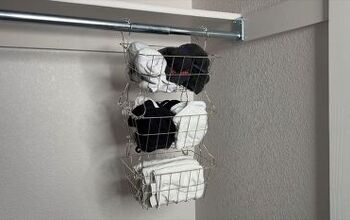
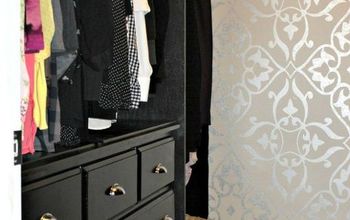
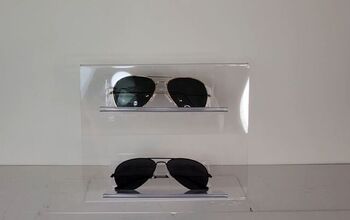
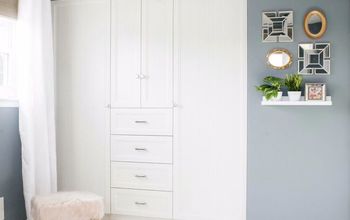



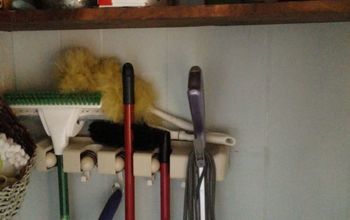
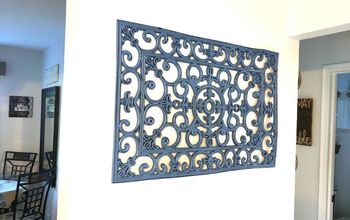

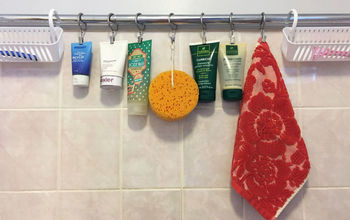



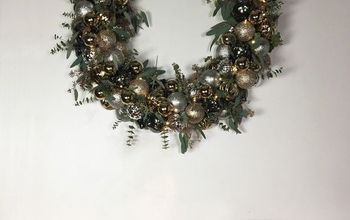



Frequently asked questions
Have a question about this project?